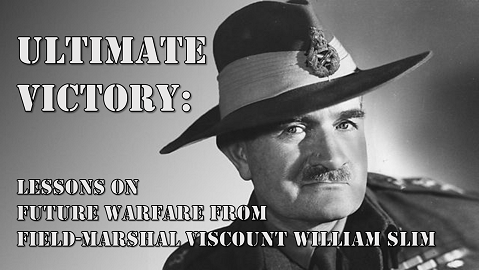[Editor’s Note: Mad Scientist Laboratory welcomes back returning blogger and podcaster Luke Shabro, Deputy Director, Army Mad Scientist, with his compelling review of the subject memoirs from a largely forgotten theater of World War II — a MadSci nod goes to the Maneuver Center of Excellence for including this essential work on their reading list! The underappreciated China-Burma-India Theater holds a dozen lessons for the contemporary Joint Force and warfighters regarding the future of warfare. These lessons are especially salient as competition and rhetoric with China, our pacing threat, heats up. The challenges Field-Marshal Slim and his 14th Army faced fighting Imperial Japan — Britain disadvantaged across time and distance, with fewer Soldiers and tenuous supply lines, on geographically challenging and remote terrain — are similar to those that the US and its coalition of allies and partner nations would face, should today’s Sino-US rivalry transition into conflict. Read on to learn what relevance this neglected chapter of Great Power Competition holds for us today!]
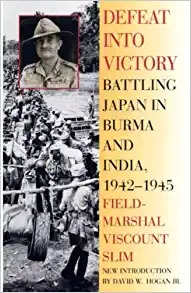
After reading countless memoirs and accounts of war from the likes of Max Hastings, Antony Beevor, Eugene Sledge, Hal Moore, Ulysses Grant, and others, Field-Marshal Viscount William Slim’s Defeat into Victory: Battling Japan in Burma and India, 1942-1945 was recommended as something different. Published in 1956, this memoir is especially relevant for today’s readers, given its description of two great imperial powers (Britain and Japan) fighting in a remote theater, with Britain disadvantaged across time and distance, fighting with inferior numbers of personnel and quantities of materiel, and hampered by mountainous jungle terrain. Additionally, the Japanese had a better understanding of the current (at that time) disposition of forces and resources, and were proficient at jungle and night fighting. “Uncle Bill” brilliantly describes the challenges, complexities, and innovative solutions required in engaging with and ultimately defeating a peer adversary with coalition forces in austere terrain, dispersed and often disconnected, with limited sustainment support and strategic priority from higher command.
 With the designation of China as the United States’ pacing threat, the U.S. Armed Forces are looking at a paradigm shift from the Global War on Terror — with its assured air superiority; sustainment, communications; Intelligence, Surveillance, and Reconnaissance (ISR); and large, static Forward Operating Bases (FOBs) — to a potentially dispersed fight in a degraded, disrupted, or denied Cyber and Electromagnetic Activities (CEMA) environment with long, tenuous Lines of Communication (LOCs). Field-Marshal Slim’s insights on a fight with similar constraints and challenges offers our Joint Force a dozen lessons on future warfare:
With the designation of China as the United States’ pacing threat, the U.S. Armed Forces are looking at a paradigm shift from the Global War on Terror — with its assured air superiority; sustainment, communications; Intelligence, Surveillance, and Reconnaissance (ISR); and large, static Forward Operating Bases (FOBs) — to a potentially dispersed fight in a degraded, disrupted, or denied Cyber and Electromagnetic Activities (CEMA) environment with long, tenuous Lines of Communication (LOCs). Field-Marshal Slim’s insights on a fight with similar constraints and challenges offers our Joint Force a dozen lessons on future warfare:
1) Command objectives and end goals must be clearly communicated to and understood by all echelons. In Slim’s view, it was paramount that leadership state clearly the strategic objectives and end goals desired in order to empower subordinate commanders to shape their operations and posture their forces to achieve them. This sounds simple, but is critical as operational commanders and their subordinate tactical warfighters are going to be necessarily operating with extensive command latitude. Lesson for Future Warfare: While the character of warfare will change, war remains an advancement of goals (usually political) by other  means. The Joint Staff should clearly enumerate strategic objectives and end goals that facilitate commensurate operational and tactical objectives. Without that clear articulation, the United States and its allies risk long-drawn out defeats (Vietnam, Afghanistan) or quicker catastrophes (Task Force Smith). The employment of unmanned and autonomous systems actually increases the importance of this requirement as context and nuance will have to be built in to orders.
means. The Joint Staff should clearly enumerate strategic objectives and end goals that facilitate commensurate operational and tactical objectives. Without that clear articulation, the United States and its allies risk long-drawn out defeats (Vietnam, Afghanistan) or quicker catastrophes (Task Force Smith). The employment of unmanned and autonomous systems actually increases the importance of this requirement as context and nuance will have to be built in to orders.
2) Defeating a proficient, motivated, and well-equipped adversary requires audacity and resiliency. Slim points out that, with few exceptions — when their under-equipped Soldiers engaged well-organized local forces along the frontiers of the Empire — British forces were accustomed to enjoying overwhelming superiority in numbers, firepower, and logistics against largely inferior forces. The British initially dismissed Imperial Japanese Soldiers as inferior fighters. Yet these highly disciplined and motivated Japanese troops, equipped with exquisite weaponry and combat platforms, dealt them a number of initial battlefield setbacks, jarring British Soldiers’ morale and inculcating the perception that their adversaries were invincible foes. Seizing the initiative and going on the offensive, British Soldiers learned that the dreaded Japanese were just men like themselves, who made tactical mistakes, bled, and died. Lessons for Future Warfare: The United States and its major allies have not had to fight an adversary with parity in materiel and personnel since World War II (and to an extent, the Korean War). While U.S. forces were prepared to fight such an adversary during 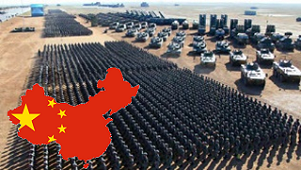 the Cold War, they haven’t experienced the demoralizing effects of tactical setbacks from an opponent possessing equal firepower and fighters in almost seven decades. Battlefield dominance is not a birthright and American forces will have to fight for every advantage on the future battlefield. Accepting the demise of supremacy in all domains will enable future warfighters and commanders to face this stark reality and search for relative advantage continuously.
the Cold War, they haven’t experienced the demoralizing effects of tactical setbacks from an opponent possessing equal firepower and fighters in almost seven decades. Battlefield dominance is not a birthright and American forces will have to fight for every advantage on the future battlefield. Accepting the demise of supremacy in all domains will enable future warfighters and commanders to face this stark reality and search for relative advantage continuously.
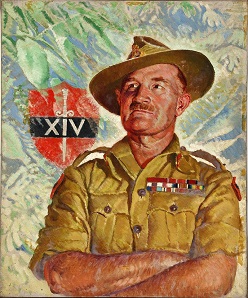
3) Admitting to and learning from one’s mistakes is essential for victory. Slim’s memoir of the Burma campaign is one of the most humble and self-effacing war accounts I’ve ever read. He readily admits to major mistakes he made in earlier campaigns and speaks to learning from them, which is what enabled the British to turn initial defeat into victory in Burma. He also noted that Japanese commanders would not admit to mistakes because of their rigid code of honor – they passed on responsibility and orders, often blindly, without change. Lesson for Future Warfare: On highly lethal and increasingly fast future battlefields, it is imperative that commanders and decision-makers be ready and able to admit their mistakes and quickly learn from them. This lesson applies to machines as well. Future intelligent entities (AI) will be learning systems that need to be able to quickly assess when something wrong or undesired has occurred and self-correct without human intervention due to the unstable CEMA environment. Additionally, human context is essential for recognizing mistakes where machines can’t.
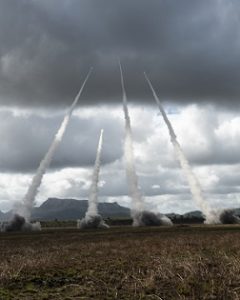
4) Early wins are a pathway to scalable success. While British forces were outnumbered in Burma, the Field-Marshal focused early on always concentrating overwhelming force to ensure success. His subordinate commanders were ordered to use an entire battalion to attack a company or most of a division to destroy a battalion. These early successes showed British Soldiers that their enemy could be beaten and instilled confidence in them that could be built upon. These initial successes were small in scale but grew exponentially over time. Lesson for Future Warfare: The importance of achieving small victories early will perpetuate into the future as U.S. formations cannot rely on superiority in weaponry or even personnel. It is equally important that Commanders look at how to consolidate gains in supporting operational and strategic objectives.
5) Go on the offensive early to disrupt and dis-integrate the enemy’s plan. Slim found British and Chinese forces beleaguered and on the defensive upon his assumption of command. Perhaps due to senior leaders’ previous experience with dug-in, attrition warfare during the Great War, it initially provided the Japanese forces space to continually expand their operations and dictate how the war was fought. Going on the offensive eroded Japanese supply lines, disrupted their commanders’ plans and planning, and kept them guessing, which often led to the Japanese making critical mistakes. Lesson for Future Warfare: Seizing the initiative and launching 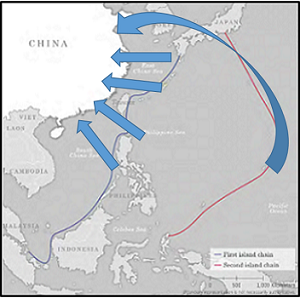 offensives can throw a peer adversary like China off their methodical, scientific approach to warfare on the future battlefield, presenting them with multiple dilemmas and potentially confusing their intelligent systems that are operating off predictive models.
offensives can throw a peer adversary like China off their methodical, scientific approach to warfare on the future battlefield, presenting them with multiple dilemmas and potentially confusing their intelligent systems that are operating off predictive models.
6) A culture of health, cleanliness, and discipline is critical when operating under difficult conditions. The Viscount writes how important it is that the health and cleanliness of troops be a top priority for commanders. When mandates ordering vaccines and preventive medicines be taken were not being followed, he relieved any leader whose unit was not in compliance within days. He noted the harshness of “fighting in the bush” shorthanded and under-supplied was difficult enough, without losing men to preventable 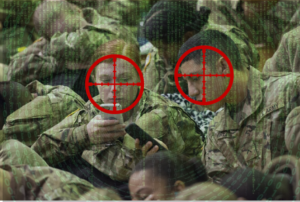 and treatable diseases and unsanitary conditions. Additionally, while military drill and uniform regulations were often excoriated by troops as nothing more than parade ground theatrics, Slim stressed how important discipline was to unit cohesion in the face of adversity. Lesson for Future Warfare: Commanders will have to take an all-encompassing approach to health, cleanliness, and discipline in the operational environment that includes components considered novel today: data cleanliness, whole-of-soldier (physical, mental, digital identity) health, and discipline that may manifest in the metaverse and individual levels of electro-magnetic emissions and communications in the Internet of Things.
and treatable diseases and unsanitary conditions. Additionally, while military drill and uniform regulations were often excoriated by troops as nothing more than parade ground theatrics, Slim stressed how important discipline was to unit cohesion in the face of adversity. Lesson for Future Warfare: Commanders will have to take an all-encompassing approach to health, cleanliness, and discipline in the operational environment that includes components considered novel today: data cleanliness, whole-of-soldier (physical, mental, digital identity) health, and discipline that may manifest in the metaverse and individual levels of electro-magnetic emissions and communications in the Internet of Things.
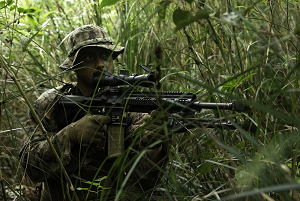
7) Embrace your fears and “the suck.” Slim remarks that most of the British troops fighting in Burma were boys who grew up in the lights of London and were unfamiliar and scared fighting in the jungle and darkness. British forces worked on becoming comfortable with the dynamic and unfamiliar nature of the jungle and the uncertainty of night operations so that they could fight as well, if not better, than the Japanese under these conditions. He additionally wanted them comfortable with the idea of the Japanese infiltrating and operating behind and among British lines so that there was no mass panic when it inevitably occurred. Lesson for Future Warfare: American forces accustomed to large FOBs with creature comforts and warm beds should learn to operate Spartan-like in austere conditions. Additionally, future generations of warfighters accustomed to hyperconnectivity will have to adjust to frequent periods of degraded, disrupted, or denied connectivity.
8) Coalition partners and combat support elements are essential to the fight. Many British units treated their Indian, Ghurka, and Chinese counterparts and subordinates with indifference, neglect, and sometimes contempt. Slim found all of them to be equal fighters to the British (especially Indian and Ghurka forces) when treated and trained equally. He ensured they ate the same rations, received the same equipment, and maintained the same discipline. This focus on equality created an integrated and capable Joint fighting force, rather than disparate British, colonial, and foreign elements. He is one of few contemporary commanders that does not refer to minorities in a patronizing or discriminatory way. Additionally, Slim stresses the importance of engaging rear echelon and “support” forces with the same vigor as frontline fighters so that logistics and other enabling forces understood how essential they were to the overall campaign. Lesson for Future Warfare: In the future, the US will fight as part of a larger coalition with allies and partner  nations; equality should extend to how we share data and information. So-called “enablers” in cyber, information, and virtual operations may often play a bigger part on the future battlefield than boots-on-the-ground warfighters; this talent will need to be recruited, trained, and treated accordingly.
nations; equality should extend to how we share data and information. So-called “enablers” in cyber, information, and virtual operations may often play a bigger part on the future battlefield than boots-on-the-ground warfighters; this talent will need to be recruited, trained, and treated accordingly.
9) Deception, while difficult to implement, pays fantastic dividends. The British expended significant resources and effort on deception efforts, forcing the Japanese to squander resources on futile efforts or re-directing them away from critical areas. One of the biggest challenges was to keeping allied commanders dispersed over a wide area on the same page for deception purposes.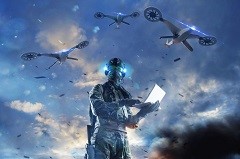 Lesson for Future Warfare: Future deception efforts will incorporate autonomous systems, requiring intensive coordination; complex efforts may need to be AI-assisted. The American approach to deception since World War II has largely been an afterthought; it will have to be ingrained into training, doctrine, and warfighting concepts as part of the U.S. military’s DNA. It will necessarily be a Joint and allied venture.
Lesson for Future Warfare: Future deception efforts will incorporate autonomous systems, requiring intensive coordination; complex efforts may need to be AI-assisted. The American approach to deception since World War II has largely been an afterthought; it will have to be ingrained into training, doctrine, and warfighting concepts as part of the U.S. military’s DNA. It will necessarily be a Joint and allied venture.
10) Air power (or any technology) is not a magic bullet. The Field-Marshal writes that while the British initially thought aerial bombardment would decimate the enemy, they quickly realized that there was a limit to what air power could do – especially against an adversary with its own effective anti-air capabilities (i.e., Japanese Zeros and anti-aircraft guns). The adversary also became more adept at cover, concealment, and deception — using the jungle canopy to provide protection. Air power was a useful component, but troops on the ground were critical to engaging the enemy and holding their critical LOCs at risk. He also aptly notes that air supply was a British Army problem, not just an RAF one. Army components worked closely with the RAF to thoroughly and clearly explain supply priorities and organize its own forces and facilities to quickly accept and organize the flow of logistics onward to reduce the threat of Japanese interdiction of air supply aircraft and personnel. 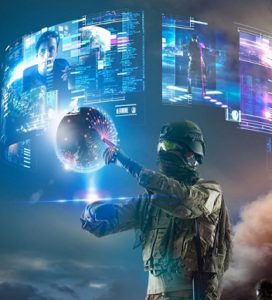 Lesson for Future Warfare: While AI/ML solutions and autonomous systems (as well as other emerging technologies like hypersonic weapons, directed energy weapons, and quantum communications, computing, and sensing) will feature prominently in future war, they will all have limitations and particular drawbacks. No single technology or even cluster of technologies will be decisive; it will take the deft application of those technologies by incredibly capable and critically-thinking humans through well-designed warfighting concepts to defeat a motivated, highly-capable peer adversary.
Lesson for Future Warfare: While AI/ML solutions and autonomous systems (as well as other emerging technologies like hypersonic weapons, directed energy weapons, and quantum communications, computing, and sensing) will feature prominently in future war, they will all have limitations and particular drawbacks. No single technology or even cluster of technologies will be decisive; it will take the deft application of those technologies by incredibly capable and critically-thinking humans through well-designed warfighting concepts to defeat a motivated, highly-capable peer adversary.
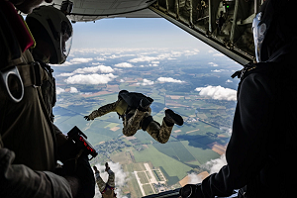
11) Special operations have a narrow and limited applicability. Slim notes that while special operations personnel and units can be extremely effective and even necessary, over reliance on them can detract from the overall mission. He notes that the time, effort, and money expended on training and equipping these elite units does not result in commensurate dividends due to their limited window of application, both in time and tasks. He further states that too much attention on special operations forces can imply regular forces are incapable of special missions and lessens their importance. Lesson for Future Warfare: While there is a propensity to fund and emphasize special operations forces (especially during an inter-war period), their scope for utilization is limited.
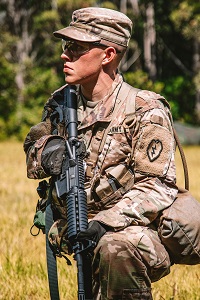
12) The human matters! Despite the emergence of new technologies and approaches to warfare, humans continue to matter more than any other factor. Slim continually brings up how all the Soldiers under his command were the winning factor. He quipped an oft-repeated phrase in the Burma campaign “Tough lads for a tough job!” Slim states that humans mattered even more with the likelihood of advanced weapons forcing dispersed operations, communications, and logistics. He notes that soldiers in the Burma campaign were never short on brains, innovation, and courage. Lesson for Future Warfare: While adversaries may reach parity in materiel and develop their own effective warfighting concepts, humans will still be the determining factor and winning edge in war. We should focus on recruiting and developing warfighters and Leaders that are tech-savvy and literate, but adaptive and resilient with top-notch critical thinking skills to inoculate the future force from disruption and unpredictability. Machines and machine-speed applications will be prominent across the battlefield, but the importance of humans cannot be overstated.
Many other lessons learned include the requirement for conversations with “difficult” senior officers like General Joseph “Vinegar Joe” Stillwell in private, or the burden of command that forces leaders to order colleagues and friends to hold fast despite overwhelming odds or commit them to missions that could mean certain death, but the aforementioned twelve are the most salient regarding future warfare. One paramount lesson Slim learned when he was a young officer from a seasoned veteran (while he was sitting and reading a book on military strategy) holds true in a world of Multi-Domain Operations, Joint All-Domain Command and Control, and intelligent warfare —
“Don’t worry about all them lessons, sonny boy. Just hit the enemy hard, quick as you can, and when they ain’t lookin!”
If you enjoyed this post, check out the following:
The BBC’s Great Lives podcast episode, with General Sir Mike Jackson, former Chief of the General Staff, British Army, and military historian Julian Thompson discussing General Slim’s achievements as a military leader;
… noted author of The Flashman Papers and McAuslan series of novels George MacDonald Fraser provides a 19-year old Private’s tactical perspective of this fight while serving in General Slim’s 14th Army in his memoir Quartered Safe Out Here. Military historian Sir John Keegan wrote: “There is no doubt that it is one of the great personal memoirs of the Second World War;“
… and Mad Scientist content on future warfare:
In It to Win It: Competition, Crisis, & Conflict
Making the Future More Personal: The Oft-Forgotten Human Driver in Future’s Analysis and “Once More unto The Breach Dear Friends”: From English Longbows to Azerbaijani Drones, Army Modernization STILL Means More than Materiel, by Ian Sullivan
Young Minds on Competition and Conflict
Going on the Offensive in the Fight for the Future and associated podcast
The Convergence: The Future of Talent and Soldiers with MAJ Delaney Brown, CPT Jay Long, and 1LT Richard Kuzma and associated podcast
China’s PLA Modernization through the DOTMLPF-P Lens, by Dr. Jacob Barton
Competition and Conflict in the Next Decade
Disrupting the “Chinese Dream” – Eight Insights on how to win the Competition with China
The PLA and UAVs – Automating the Battlefield and Enhancing Training
>>> REMINDER: Army Mad Scientist Fall / Winter Writing Contest:  Crowdsourcing is an effective tool for harvesting ideas, thoughts, and concepts from a wide variety of interested individuals, helping to diversify thought and challenge conventional assumptions. Army Mad Scientist seeks to crowdsource the intellect of the Nation (You!) with our Fall / Winter Writing Contest’s two themes — Back to the Future and Divergence – check out the associated writing prompts in the contest flyer and announcement, then get busy crafting your submissions — entries will be accepted in two formats:
Crowdsourcing is an effective tool for harvesting ideas, thoughts, and concepts from a wide variety of interested individuals, helping to diversify thought and challenge conventional assumptions. Army Mad Scientist seeks to crowdsource the intellect of the Nation (You!) with our Fall / Winter Writing Contest’s two themes — Back to the Future and Divergence – check out the associated writing prompts in the contest flyer and announcement, then get busy crafting your submissions — entries will be accepted in two formats:
Written essay (no more than 1500 words, please!)
Tweet @ArmyMadSci, using either #MadSciBacktotheFuture or #MadSciDivergence
We will pick a winner from each of these two formats!
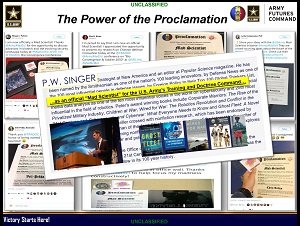 Contest Winners will be proclaimed official Mad Scientists and be featured in the Mad Scientist Laboratory. Semi-finalists of merit will also be published!
Contest Winners will be proclaimed official Mad Scientists and be featured in the Mad Scientist Laboratory. Semi-finalists of merit will also be published!
DEADLINE: All entries are due NLT 11:59 pm Eastern on January 10, 2022!
Any questions? Don’t hesitate to reach out to us — send us an eMail at: madscitradoc@gmail.com
Luke Shabro is a futurist, intelligence analyst, and Deputy Director, Analytics, for the Army Mad Scientist Initiative and Senior Futures Analyst at TRADOC G-2. He served for eight years as an active duty Intelligence Specialist in the United States Navy, deploying aboard the USS JOHN C STENNIS (CVN-74) and instructing basic and intermediate Navy intelligence students. He has worked extensively in all-source intelligence, counterinsurgency, counterterrorism, global security, and futures analysis. He has a BA in International Studies from Old Dominion University and an MA in Political Science from Virginia Tech.
Disclaimer: The views expressed in this blog post do not necessarily reflect those of the Department of Defense, Department of the Army, Army Futures Command (AFC), or Training and Doctrine Command (TRADOC).

